
 Podcasts
PodcastsCatch the latest PR news & updates with PRovoke Media's PR Podcasts. Lifting the lid on key industry stories & trends, join our listeners of PR podcasts today.
 Videos
VideosLatest video interviews and campaigns from PRovoke Media, previously known as the Holmes Report.
Long-form journalism that analyzes the issues, challenges and opportunities facing the business and practice of PR.
 Profiles & Interviews
Profiles & InterviewsExplore PR profiles and interviews with leaders from the marketing and PR worlds.
 Crisis Review
Crisis ReviewPR Crisis & Business Crisis review. PRovoke Media's annual analysis of the top reputation crises to rock the corporate sector. Read on here.
 Coronavirus
CoronavirusPRovoke Media's coverage of the Covid-19 crisis, focusing on corporate communication, public affairs & PR industry fallout.
 Trend Forecasts
Trend ForecastsPRovoke Media's PR Trends round up. PRovoke Media's annual forecast of PR trends and news that will impact the PR world in the year ahead...
 Social & Digital
Social & DigitalDedicated to exploring the new frontiers of PR as it dives deeper into social media, content and analytics.
 Technology
TechnologyOur coverage of key technology PR trends and challenges from around the world of digital communications.
 Consumer
ConsumerFrom brand marketing to conscious consumerism, coverage of key marketing and PR trends worldwide.
 Employee Engagement
Employee EngagementPRovoke Media's coverage, analysis and news around the rapidly-shifting area of employee engagement and internal communications.
 Sports Marketing
Sports Marketing Sports PR news, diversity & inclusion trends, views and analysis from PRovoke Media. Subscribe today for the very latest in the world of sports communications.
 Global PR Agency Rankings
Global PR Agency RankingsPRovoke Media's definitive global benchmark of global PR agency size and growth.
Enter PRovoke Media's 2024 Global 250 Agency Ranking and/or our Agencies of the Year competitions now.
 Agencies of the Year
Agencies of the YearPRovoke Media's annual selections for PR Agencies of the Year, across all of the world's major markets.
 Innovator 25
Innovator 25PRovoke Media profiles marcomms innovators from across North America, EMEA and Asia-Pac.
 Creativity in PR
Creativity in PRIn-depth annual research into the PR industry's efforts to raise creative standards.
 Asia-Pacific Communication Index
Asia-Pacific Communication IndexAPACD/Ruder Finn annual study of Asia-Pacific in-house communications professionals.
 SABRE Awards
SABRE AwardsThe world's biggest PR awards programme, dedicated to benchmarking the best PR work from across the globe.
 PRovokeSummit Global
PRovokeSummit GlobalThe biggest PR conference of the year, a high-level forum designed to address the critical issues that matter most.
 PRovoke Media Regional Series
PRovoke Media Regional SeriesA global network of conferences that explore the innovation and disruption that is redefining public relations.
 Agencies of the Year
Agencies of the YearUnrivalled insight into the world's best PR agencies, across specialist and geographic categories.
 Roundtables
RoundtablesOur Roundtables bring together in-house comms leaders with PR firms to examine the future of communications.
 Agency Playbook
Agency PlaybookThe PR industry’s most comprehensive listing of firms from every region and specialty
.jpg) All Jobs
All JobsFind the latest global PR and communications jobs from PRovoke Media. From internships to account executives or directors. See all our PR jobs here.
PRovoke Media's editorial series published in collaboration with partners.
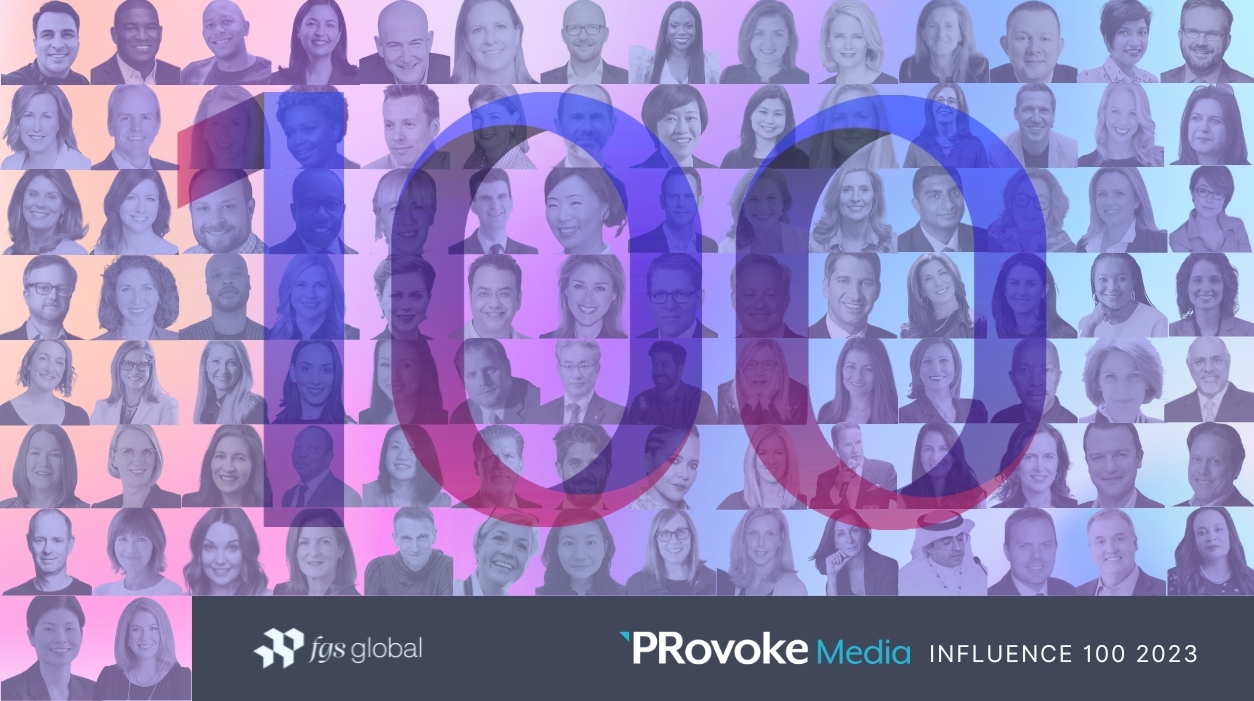
When we asked our respondents about their predictions for the future of the chief communications officer and chief marketing officer roles, the responses were varied, with, as last year, a real sense that the two functions would evolve in the face of ongoing significant and even transformational challenges for business, linked to much bigger issues outside their own firms.
There was again a clear view that the responsibilities of the CCO role would evolve as a result of an increasing focus on ESG, purpose and social impact – and the knock-on effect on reputation – but unsurprisingly, artificial intelligence was a recurring theme this year, for the first time (see also below for more thoughts from the Influence 100 on how AI will impact the communications industry).
Overall, the increasingly complexity of the roles in the current landscape came through loud and clear:
“I feel the role of the CCO is at an inflection point. The pandemic has made it even more conducive as effective communication has taken a center stage in almost all aspects of an organization. Unprecedented challenges, risk to reputation, increased vulnerability of crisis, fast changing macro indicators, are just a few of the nuances of the change. Other issues around the need to reinvent business models, uncertain sociopolitical conditions, and possible new and hybrid way of working and higher dependence on technology have shaken up business set ups. There has also been a paradigm shift in employee engagement and wellbeing. These changes have given the communicators role much prominence. CCOs who will adapt to these changes, upskill themselves and enhance their relevance will thrive. I feel at no time in decades have businesses faced this sort of a complex web. CCOs will be on a roll.”
“Reputation assets are central to move a company and its corporate trust throw complex geopolitical and economics transition. Comms departments don’t represent or manage just the equity story, we are becoming intelligence insights centres, to drive corporates on complex issues and opportunities like cybersecurity, ESG, technologies developments, environmental impacts, labor changes.”
“CCOs need to take on more issues and crisis topics than ever before, oftentimes without additional resources. CCOs need an agile mindset to be able to navigate this. CCOs must be change agents, working even more closely with HR.”
“Brands are expected to embrace purpose-driven initiatives and demonstrate a strong commitment to their values. CCOs and CMOs will play pivotal roles in shaping and communicating these values authentically, aligning the brand's heritage and DNA with contemporary expectations.”
“CCOs will continue to have a critical role in managing and protecting the brand's reputation, especially in the age of social media and instant communication. Also both CCOs and CMOs will increasingly be seen as critical advisors to the C-suite, offering insights on market trends, consumer behavior and reputation management.”
“CMOs/CCOs and their teams are expected to excel at creating customer trust via a brand that exudes empathy and data-driven strategies that deliver results.”
“As macro-economic factors continue to force companies to prioritize growth over the more traditional and historical aspects of the CMO/CCO role, we'll have adeptly tie things like brand building, CX, and reputation and stakeholder engagement to value creation.”
Many of our influencers still feel that there will be more integration and coordination between the CCO and CMO roles – if not a blurring of the roles – to meet businesses’ future challenges:
“CCO and CMO roles are continually evolving, and in the future, they may increasingly work hand-in-hand towards cross-functional collaboration, data-driven decisions, carefully-curated brand purpose and direction, and adapting to digital transformations to stay ahead in the rapidly changing landscape.”
“I think CCOs and CMOs will need to integrate for critical alignment and message coherence – particularly as the lines between traditional ‘corporate’ and consumer stakeholders continues to blur. A far greater array of stakeholders are interested in how products are manufactured, their traceability and their impact on the environment from cradle to grave. CCOs and the communications function will mature in their capability to act as the single point for convergence for stakeholder issue integration, sensemaking and for aligned, cohesive narrative.”
“The boundaries between communications and marketing functions will continue to blur. CCOs and CMOs will need to work more collaboratively, adopting an integrated approach that aligns messaging, brand positioning, and communication strategies.”
“Less competition and more partnership. Less CMOs having the upper hand, and more of an equal partnership.”
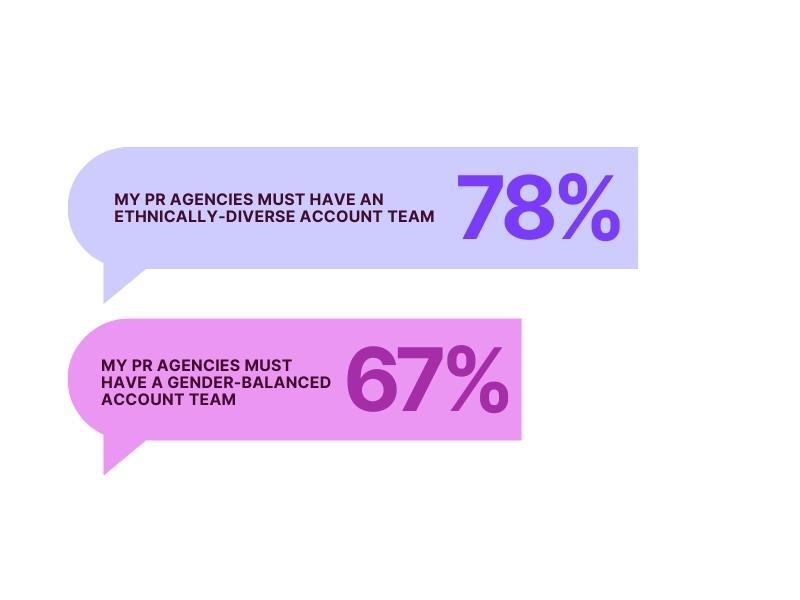
Diversity, equity and inclusion has been a spotlight theme for the comms industry for three years now, but it has been noted on several occasions in the pages of PRovoke Media in recent months that commitment to DE&I seems to have slowed down. This year’s Influence 100 survey bears this out, with the number of respondents who agreed or strongly agreed that their PR agencies must have an ethnically diverse team was down from 83% last year to 78%. For context, in 2020, the number of our respondents who said the same was up from 67% in 2019 to 86%.
Slightly fewer respondents were neutral on this question: 12% compared to 15% last year, while the number of in-house leaders who disagree or strongly disagree that their agencies must have ethically-diverse teams, has risen from less than 3% last year to 5%, close to 2021’s figure of 6%.
There is a more solid level of conviction when it comes to whether our respondents think the communications industry is committed to recruiting, retaining and promoting people of color: 57% agreed, up from 54% last year – and just 37% in 2017. A further 32% were neutral, up from 29% last year and the same level as in 2021. The proportion of our Influence 100 who think the industry is not committed to resolving issues of racial inequity has dropped from 17% last year to 11%, although 3% of these strongly agreed with this – up from zero in the previous two years.
There is even more conviction that the industry is now committed to recruiting, retaining and promoting people from diverse socio-economic backgrounds: 65% agree or strongly agree, up significantly from 43% last year and nearly double 33% in 2020. While 16% are neutral on this point, 19% still disagree or strongly disagree, compared to 24% last year.
When it comes to gender, there’s been another worrying drop off in the number of CCOs who agree or strongly agree their PR agencies must have a gender-balanced account team, down from 82% in 2020 to 73% in 2021, 71% last year and now 67%. The number who said gender balance was not a requirement of their agency teams was up from 5% last year to 8%, but still down on 11% in 2020; 24% remained neutral on this question.
However, the number of our influencers who agree that the industry is committed to recruiting, retaining and promoting women was up dramatically from 85% to 97%. Only 3% took a neutral stance and no-one disagreed with this statement.
There’s a more confident response to the question of whether the industry is committed to recruiting, retaining and promoting people from the LGBTQ community: 78% agreed or strongly agreed it was, up from 71% for the previous two years (when it was again up sharply from 57% in 2020 and 49% in 2019). A further 14% were neutral and 8% disagreed with this statement, compared to 7% last year.
We again asked our Influence 100 to delve deeper this year, and come up with practical suggestions for what the PR and communications industry could actually do to improve diversity, equity and inclusion.
Hiring and recruitment practices and approach were, unsurprisingly, a key theme, including diverse interview panels and unconscious bias training, as well as bringing younger people from more diverse backgrounds into the industry. For many, a key element to resolving the industry’s diversity problem is at the grassroots, on internships and entry-level roles, including working more closely with schools – at least one respondent said the industry should be talking more to teenagers about the industry – as well as targeting colleges and universities.
Others called for more coordinated networking and mentoring of young diverse talent from varied backgrounds, and the need to “create multiple pathways for rewarding careers” by “building programs through public-private partnerships that expand access to skills.”
The need to support and promote diverse talent was emphasized by several respondents, including into leadership roles: “I know it's tough as many PR leaders are white males, but wonder if we can start promoting folks who are up and coming? How do we start opening more doors? And how do we make it less scary for folks who are not Caucasian to want to be in the PR industry? At a time when we are dealing with so many social issues, diverse perspectives are needed.”
Hiring into senior roles from non-traditional routes was also mooted: “The industry should consider transferable skills and varied experience. I arrived at a PR leadership role through a non-traditional path. We have people with a variety of different backgrounds, which naturally creates more opportunities for diversity than you might find if you hire people who’ve come up through the typical agency and corporate background.”
It was also suggested that the best way of improving diversity was to make the business case for it – “Celebrate examples of DEI driving business results across industries” – as well as “showcasing how diversity prevents groupthink and adds to creativity.”
One of the most dominant suggestions was better measurement around diversity targets with transparent reporting against performance and impact: “Transparency leads to change.” However, given concerns that DE&I has dropped down the agenda, the most common response to this question was, simply, “stay focused”.
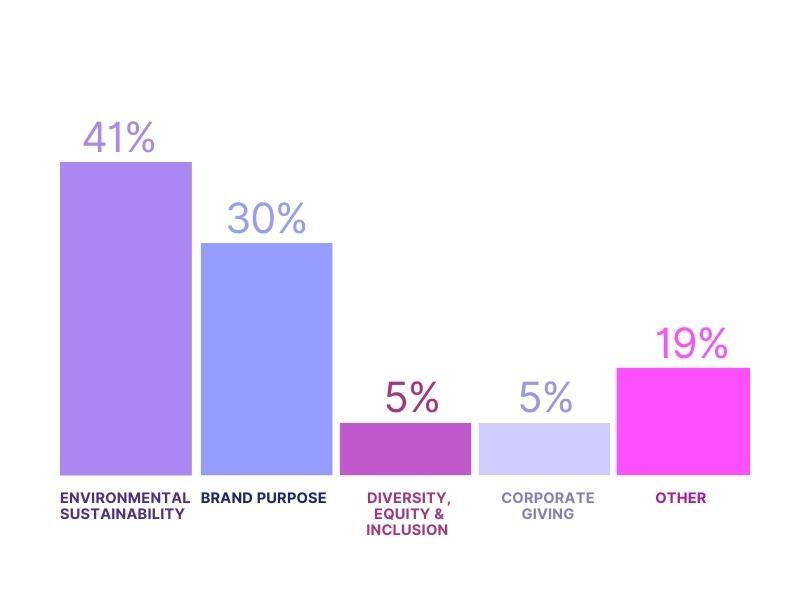
In the three years we’ve been asking respondents this question, environmental sustainability has only grown in importance for communicators as businesses strive to become better corporate citizens. It was cited by 29% of respondents in 2021, then 34% last year, and this year it’s up again to 41%. And, again, this part of the survey demonstrates that DE&I has indeed dropped down the agenda for in-house communicators: the percentage of respondents anticipating diversity, equality and inclusion being their top “social good” priority for the year ahead dropped from 15% last year to just 5%.
Brand purpose has levelled out as a priority for our influencers: 30% said this was the most important for the comms function this year, compared to 32% last year and 25% in 2021. Corporate giving rose from 2% to 5%, and 19% had other priorities.
As a companion question to which areas of social good our influencers felt would be important for the comms function in the year ahead, we also asked them to tell us in their own words how their employees were responding to efforts around ESG, purpose and DE&I.
The response was overwhelmingly positive, with many saying their teams were supportive, engaged and proud of what their employer was doing in these areas – with several measuring this through employee surveys – as well as teams demonstrating their personal commitment through volunteering, community initiatives and advocacy on their own social channels.
The value of ESG, DE&I and purpose to recruitment, retention and organisational culture was emphasized by a number of our influencers:
“Our employees feel well educated and aware of our purpose and believe they work for a brand that reflects their values. Employee voice and ERG remains a critical opportunity for us to capture employee voice and build community.”
“Employees usually respond positively to ESG, purpose, and DE&I initiatives when they are transparently and genuinely embedded in the company's culture and practices. Such efforts can not only improve a company's reputation but also promote job satisfaction, retention, and inspire greater employee engagement.”
“It's a key for talent attraction and retention and purpose is cited as strong motivator.”
There were some notes of caution despite this momentum in such a fast-evolving area, however, including the importance of “making realistic goals and not overpromising”, and one respondent noted that their team’s expectations were “rising rapidly as the bar moves higher.”
Another influencer said: “ESG and purpose are very advanced and understood, and give our people pride in the company, especially regarding our social impact and contribution toward global climate goals. However, while great progress is being made in DE&I – including policy development, strategies and goals, and culture programmes/colleague networks to promote understanding – this is still an evolving space. Work is underway to move the organization from a compliance bent, to embracing why DE&I matters and what it unlocks for the organization as a whole.”
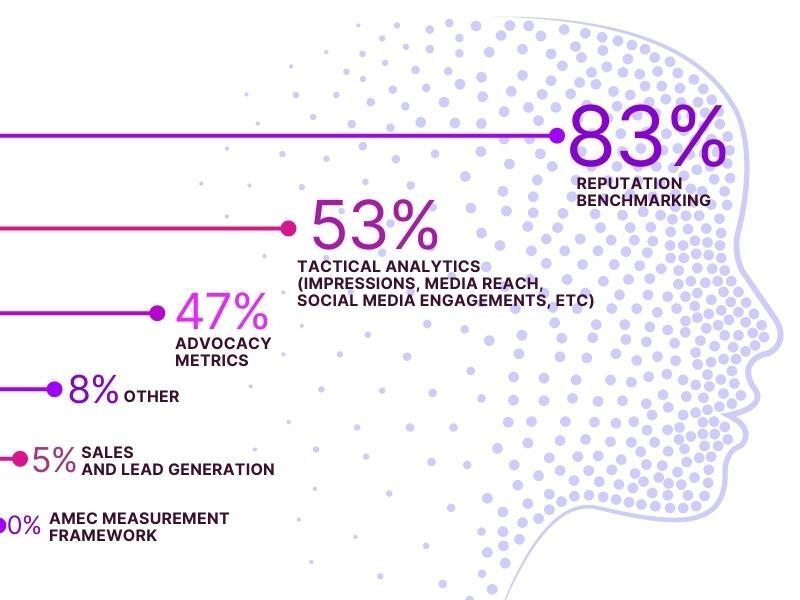
Reputation benchmarking is once again the metric most of our Influence 100 are measured against, with 83% saying their CEO evaluated their performance against this criterion, although this is down from 90% last year and on a par with 2021. The number saying their CEO looked at sales and lead generation to evaluate the success of comms was again just 5%, while tactical analytics, such as impressions, media reach and social media engagement, were used by 53% of respondents, slightly down on 56% last year.
Advocacy metrics are growing in popularity, however: up from 32% last year to 47% this year. We included the AMEC measurement framework as an option too, but none of our respondents said this was a key way their CEO evaluated PR and communications – down from 5% last year.
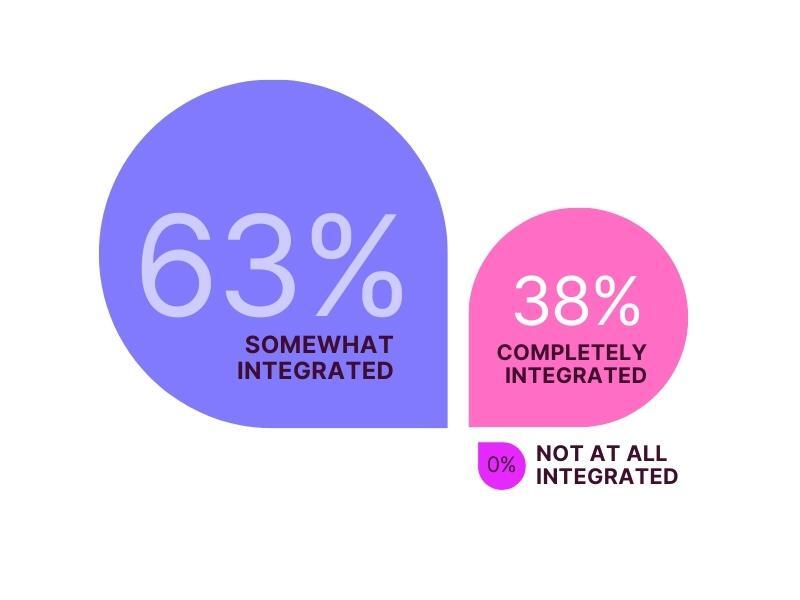
Most respondents – 63% – said their comms function was somewhat integrated with the wider marketing team, but this was down from 67.5% last year, as there was a marked increase in those who said comms was completely integrated, up from 22.5% last year to 38%, back up to 2021 levels. None of our cohort said comms was in a complete silo and not at all integrated with the extended marketing team, down from 10% last year and 4% the year before that.
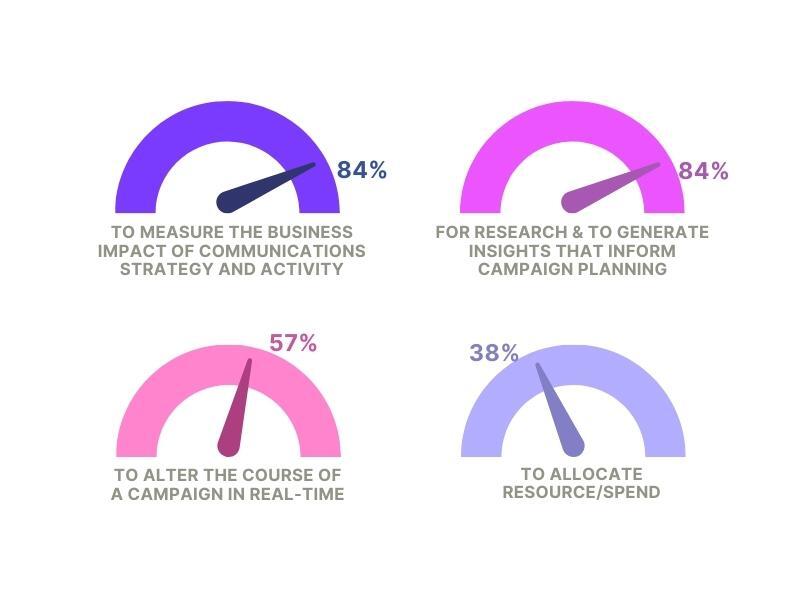
In joint top place as the most popular reasons for using data and analytics within marketing and communications were research and to generate insights for campaign planning (84%, down from 90% last year), and data and analytics to measure the business impact of comms strategy and activity, also at 84%, up from 80% last year. The number using data and analytics to allocate resource and spend dropped from 49% last year to 38% this year (a similar level to 2021 and still way behind 2019’s 65%). There was, however, a jump in the number using data to alter the course of a campaign in real-time, up again to 57%, from 46% last year and 41% in 2021.
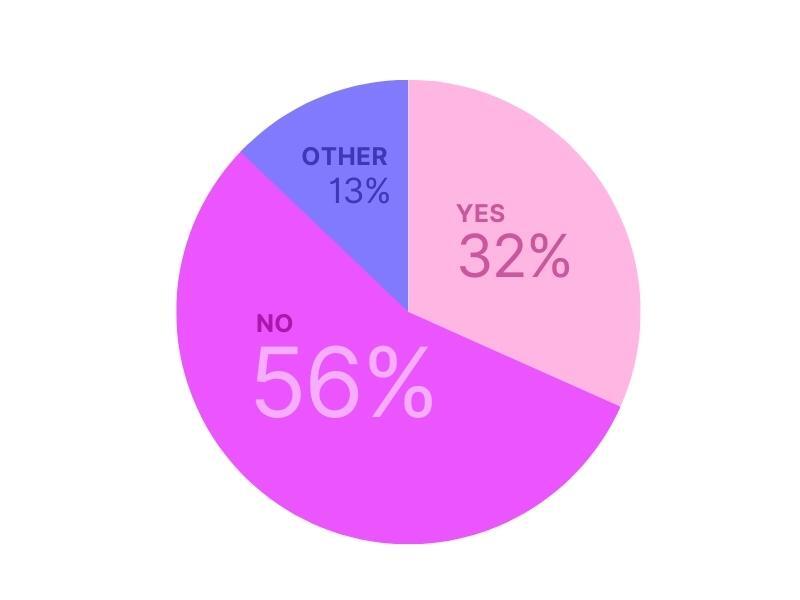
This question helps us establish if there’s a direct link made between comms and business results within brands. There has been a great deal of effort within the industry in recent years showing that PR can do just that, and it seems like this has paid off this year, with the proportion who said PR was responsible for demand generation jumping significantly from 17% to 32% – two years ago, this was just 12%. The number who said PR was not responsible for demand generation dropped correspondingly from 78% to 56%.

The potential impact of artificial intelligence on the PR industry has been a dominant topic of discussion since Chat GPT exploded into our collective consciousness at the end of 2022, so we asked our Influence 100 a new question in this year’s survey, around the extent to which their teams are already using generative AI tools. It seems like we are still at the dipping a toe in stage, at least in-house, as only 5% say their teams are now using these tools regularly. However, 24% said they were using generative AI a moderate amount and 57% said a little, indicating that in-house teams are at least starting to play with the new technology or use it in moderation; only 14% said their teams had not used generative AI at all.
We also asked our influencers to comment more broadly on how they think AI will impact the communications industry. There were no neutral responses to this question: everyone agreed the impact would be significant, ranging from “game-changing” to “like an earthquake”.
“It will become a vital tool for anyone in the profession on various fronts: stakeholder engagement, content generation, human representation by digital avatars, source of deep insights and also a creator of new risks and crises.”
“It will force agencies and in-house teams to offer higher-value services that cannot be replaced by AI. Also, practitioners need to upskill on identifying ‘fakes’, non-original work, protecting IP, and working effectively with AI within ethical and legal boundaries.”
“For reporting and maybe basic content it will have dramatic impact – it is already. Large scale creative ideas will remain unchanged and impacted by AI.”
“Generative AI is the most disruptive force of our time. Leaving the doomsday and machineapocalypse scenarios to one side, I'm less concerned that AI will replace the role of communicators – the world we live in is too complex and dynamic for this. Instead, AI's role could be additive and supportive to communications practitioners. My deep concern lies in the ability to generate a quantum of misinformation and disinformation, artificial sentiment and propagate cyber and other attacks – all of which also falls within the remit of the CCO to address. These risks require urgent intervention and regulation to help mitigate them.”
“The shift will be significant, but the true impact is still many months to years away. If we can use tools like Chat GPT to write the basics, we can spend more of our time on creative and strategic thinking. Communications will always need a human component. Context is king.”
“Personalizing channel experiences at scale works when CMOs/CCOs strike the perfect balance between their jobs' emotional and logical, data-driven parts. They need to have the compassion of a Captain Kirk and the cold, hard logic of a Dr Spock and know when to use each skill set. AI and machine learning can assist with that.”
“I firmly believe that AI will not define us, but in fact we could define it in a way that it is beneficial and adds value. AI is not good or bad. It is the manifestation of the user, just like the internet – it can be used both for fake news and for authentic narratives. AI’s true value is in augmenting the human experience. We as communicators must learn and adapt these technologies and put them to the best use, using our human intelligence.”
“It will definitely impact, but it’s not there yet – much of the heavy lifting in terms of analytics, translations, data downloads can be done by AI, but the nuance of language and the emphasis is hard to do by tech as it often requires a very unique understanding of product and audience.”
“Ultimately AI will enable our entire discipline to work differently and better. But, it will also challenge us to sharpen our reputation risk mitigation and management chops as well, given the potential for harm that also exists with AI.”
Inevitably, one enterprising respondent had fed the question into ChatGPT to yield a lengthy response, which started: “AI is expected to have a profound impact on the communications industry, transforming various aspects of how we communicate and interact” and ended thus: “While AI has the potential to transform the communications industry's efficiency and effectiveness, it is up to human communication professionals to ensure that the technology is used ethically, responsibly, and transparently.”

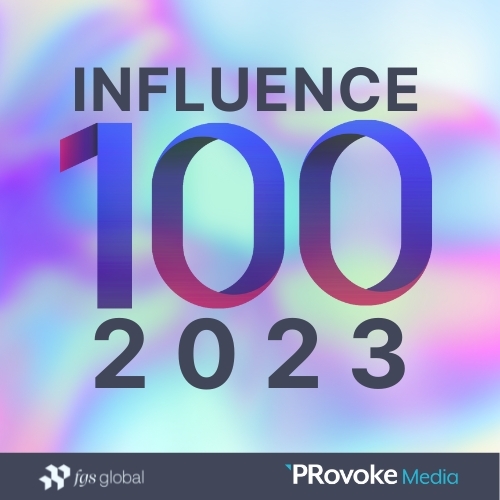
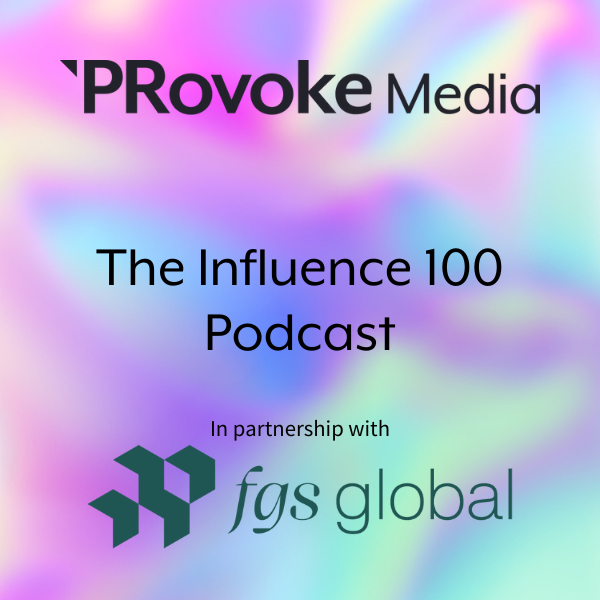

Intelligence and insight from across the PR world.
About PRovoke Media Contact Us Privacy & Cookie PolicyWe feel that the views of the reader are as important as the views of the writer. Please contact us at [email protected]
Signup For Our Newsletter Media Kits/Editorial Calendar Jobs Postings A-Z News Sitemap© Holmes Report LLC 2024